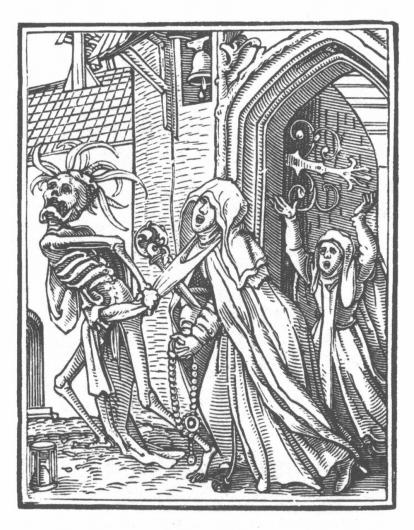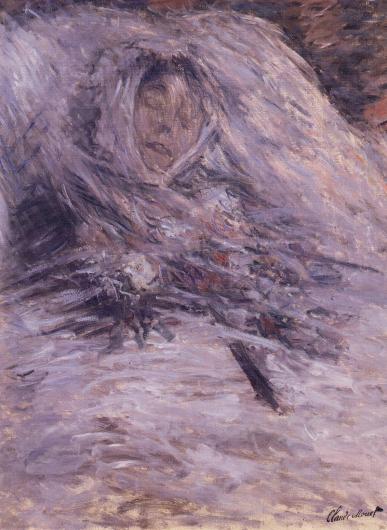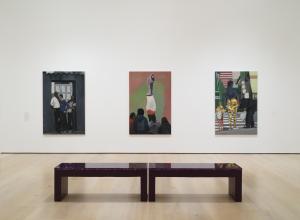
Pablo Picasso, Guernica, 1937.
As the world seems to shift and change around us in new and frightening ways every day, many of us seek solace in the arts. From great music to television, movies, and the fine arts, art can be a distraction and balm in troubled times.
Throughout history, cultures, and artists have faced upheavals and catastrophes and reflected them through their work. Here we look at ten great works of art created in uncertain times.
Though some of these works show people and cultures in crisis, they also show us the power of the arts to get us through. As artists interpret our times, they help us come to terms with and understand what is happening around us, while giving future generations a window into our experiences. Now is a great time to take comfort in the arts, whether they represent good times or darker days, and remember that humanity has faced catastrophe before, and made it through.

The Bubonic Plague, or Black Death, is perhaps the most famous plague of them all, having killed 50 million people around the world beginning in the 14th century. The Danse Macabre, or Dance of Death became a common theme in the art. The ever-presence and unpredictability of death was a fact of life, represented by skeletons looming nearby, particularly in religious art. The popularity of Hans Holbein the Younger's (1497–1543) Dance of Death shows how relatable these themes were. The book, containing forty-one woodcut prints first drawn in 1526, shows death in a variety of guises coming for people of all walks of life, even the pious, such as the Abbess seen here.

This beautiful 16th-century ivory mask from Benin shows the impact of Colonialism on African cultures. As European colonizers came to Africa to exploit it for its rich natural resources, African peoples struggled to keep their traditions intact. The ceremonial pendant mask, worn by a king to honor his mother, is ringed by small figures representing Portuguese explorers who came in search of ivory.

Eugène Delacroix's famous painting shows the cost and rewards of freedom for the French people following a period of bloody revolution. The allegorical figure of Liberty, holding a bayonet in one hand and waving the tricolor flag of the French Revolution with the other, leads the French people over barricades and the bodies of fallen comrades into battle. Behind her, we see a chaotic scene of war and destruction. Delacroix created his masterpiece soon after the July Revolution of 1830, which toppled King Charles X of France. The painting has become an inspiring symbol to people around the world who wish to rise up against tyrannical leaders.

History is written by the victors, who often destroy the art and artifacts of the people they have defeated or oppressed. The pottery of David Drake is a rare example of artworks created by an enslaved person that have survived to the present day. Drake was a master potter in the extensive ceramics factories of South Carolina, which used slave labor. Drake signed his own name to his large vessels, an uncommon practice given that slaves were forbidden to read and write, and often added humorous rhyming couplets to his works, like this one, which reads "this jar is to Mr Segler who keeps the bar in orangeburg / for Mr Edwards a Gentle man — who formly kept / Mr thos bacons horses / April 21 1858" and "when you fill this Jar with pork or beef / Scot will be there; to get a peace, - / Dave."

Tuberculosis, sometimes called “the romantic disease,” is present in much of art and literature of the 19th century. The feverishness it caused was said to heighten artistic abilities, and many women with rosy cheeks depicted in this era are thought to have had TB. Claude Monet’s 1879 portrait of his wife, Camille, on her death bed shows the dark reality of this illness, which took many lives. The blurred, dreamy portrait evokes the haze of grief the artist was in.

Nellie Two Bear Gates was one of many Native Americans in the 19th Century that was forcibly removed from her family and sent to a government-run boarding school to better assimilate her into "mainstream" white culture. After her return to her home on the Standing Rock Reservation, Gates fully embraced her Dakhóta heritage and its traditions. This beautiful beaded suitcase celebrates a marriage in her family through depeictions of Native life, and shows that despite attempts to erase her identity, Gates remained resiliant and proud of her heritage.

The Spanish Flu, the last great flu pandemic of the 20th century, is what many compared the COVID pandemic to. From 1918 to 1920, a quarter of the world’s population was infected by the disease. One of its casualties was Egon Schiele. The Austrian artist had just finished his service in World War I and his career as a professional artist was beginning to take off when the flu reached Vienna in 1918. His wife, Edith, fell victim to the disease in October, and Schiele died of it three days later. His surviving work speaks to the incredible talent and potential of the artist, and of all that is lost when so many lives are cut short.

Dorothea Lange’s image of a migrant mother from the Dust Bowl has become one of the most iconic images of the 20th century. Her photos of the Great Depression put faces and real experiences to the countless Americans who suffered during this era. The compassion and honesty evident in her photos shaped modern-day documentary photography and photojournalism.

Pablo Picasso’s Guernica is perhaps the most famous vision of the chaos and violence of war. At over twenty-five feet long, the massive painting in black, white, and grays dwarfs the viewer, over-powering us the raw emotion represented. Picasso created the work in his Paris studio as a response to the bombing of the city of Guernica by Nazi forces during the Spanish Civil War. The agony of the animals and people portrayed is palpable, making this a powerful anti-war painting.

The height of the AIDS epidemic was a terrifying time for many, as people lost their friends, partners and their own health to a disease that was incurable and not well understood. Many great artists, including Keith Haring and David Wojnarowicz, created moving works reacting to the epidemic before succumbing to the illness themselves. Felix Gonzalez-Torres’ "Untitled" (Portrait of Ross in L.A.) forces us to experience this loss of lives in a visceral way. Consisting of a pile of wrapped candies heaped on the floor of a gallery, viewers take and eat a piece of candy, slowly diminishing the pile, mirroring the way that his partner, Ross, slowly lost weight until his death.
Chandra Noyes
Chandra Noyes is the former Managing Editor for Art & Object.























